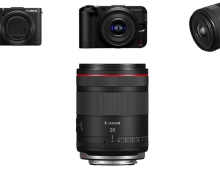
Canon is Developing Semiconductor Lithography Equipment Employing Nanoimprint Technology
Canon is developing a next-generation semiconductor lithography system employing nanoimprint technology that makes possible sub-20 nm processes. Within the high-resolution patterning segment, where 193 nm multiple patterning has become mainstream and EUV (extreme ultraviolet) continues to remain in development, in 2004, Canon began conducting research into nanoimprint technology to achieve sub-20 nm high-resolution processes.
![]() EUV lithography is a next-generation lithography technology that uses an extreme ultraviolet wavelength expected to be 13.5 nm.
EUV lithography is a next-generation lithography technology that uses an extreme ultraviolet wavelength expected to be 13.5 nm.
In nanoimprint lithography, a mold is brought into direct contact with the resist material on the substrate surface, a pattern transfer process that enables the accurate transfer of the mold's pattern and makes possible higher resolution and more uniform results compared with conventional optical lithographic approaches. In addition, unlike optical lithography tools, nanoimprint semiconductor production equipment does not require the use of a light source or high-aperture lens elements, making possible simple configurations and compact designs that enable users to install a cluster of systems for increased productivity.
The company is aiming to commercialize a nanoimprint lithography system in 2015.
Compared with conventional optical lithography equipment, nanoimprint lithography delivers reduced production costs for semiconductor devices, responding to the high-level demands of semiconductor manufacturers seeking to reduce CoO for high-resolution semiconductor devices. Canon's nanoimprint semiconductor lithography system currently under development will initially target memory device manufacturers producing flash memory. In the future, the company will aim to apply this technology in the production of DRAM and logic devices.





















